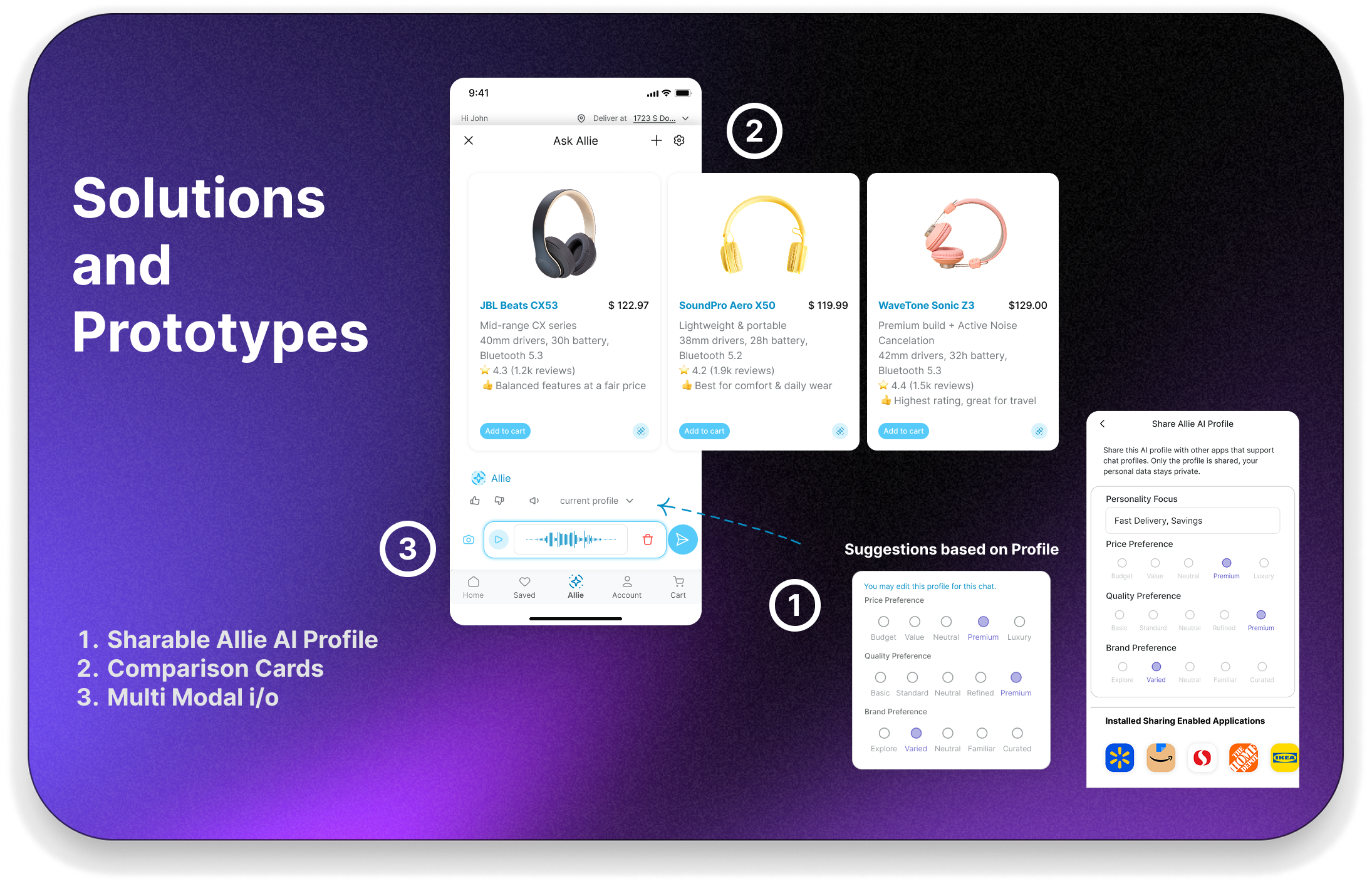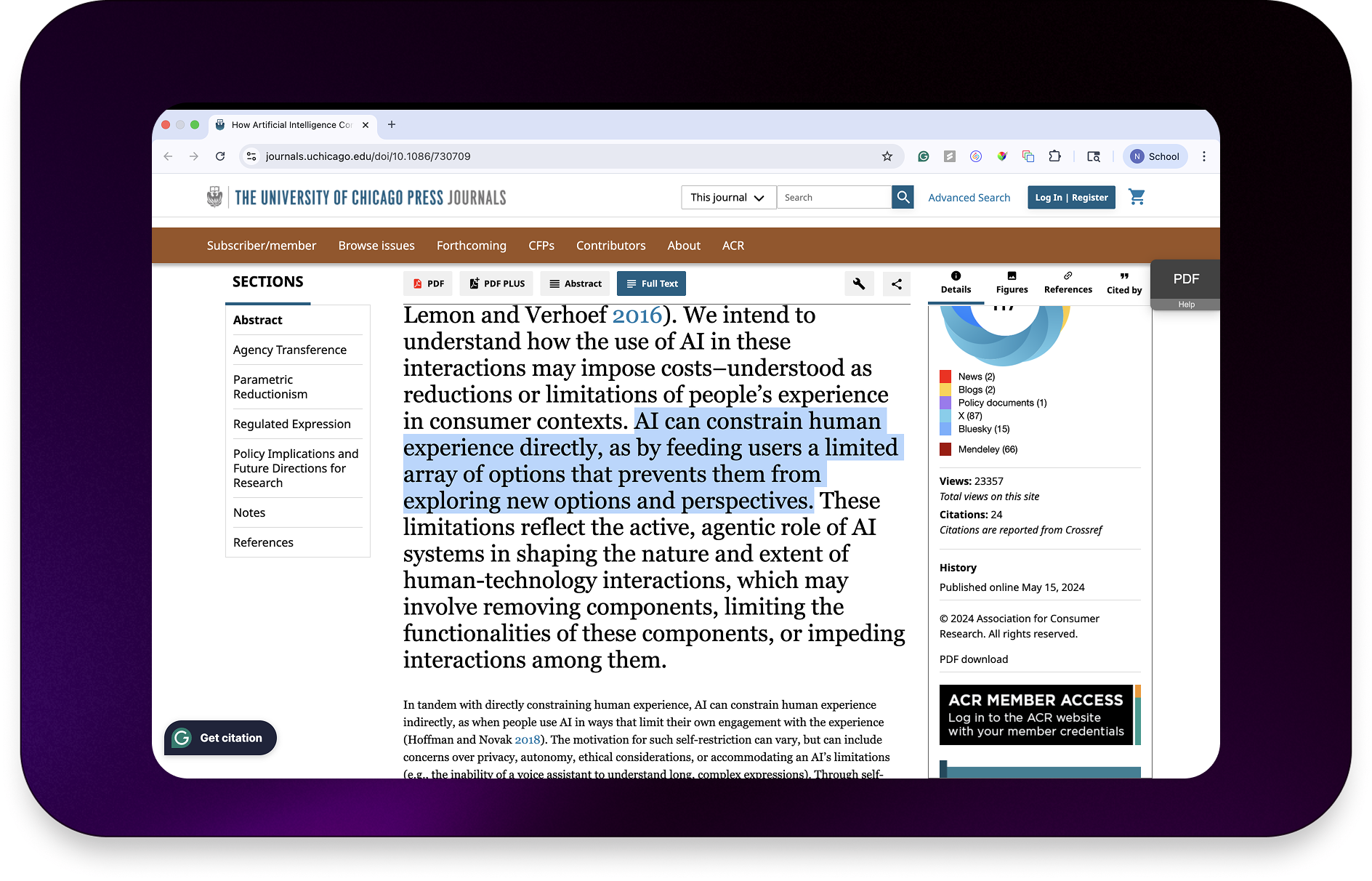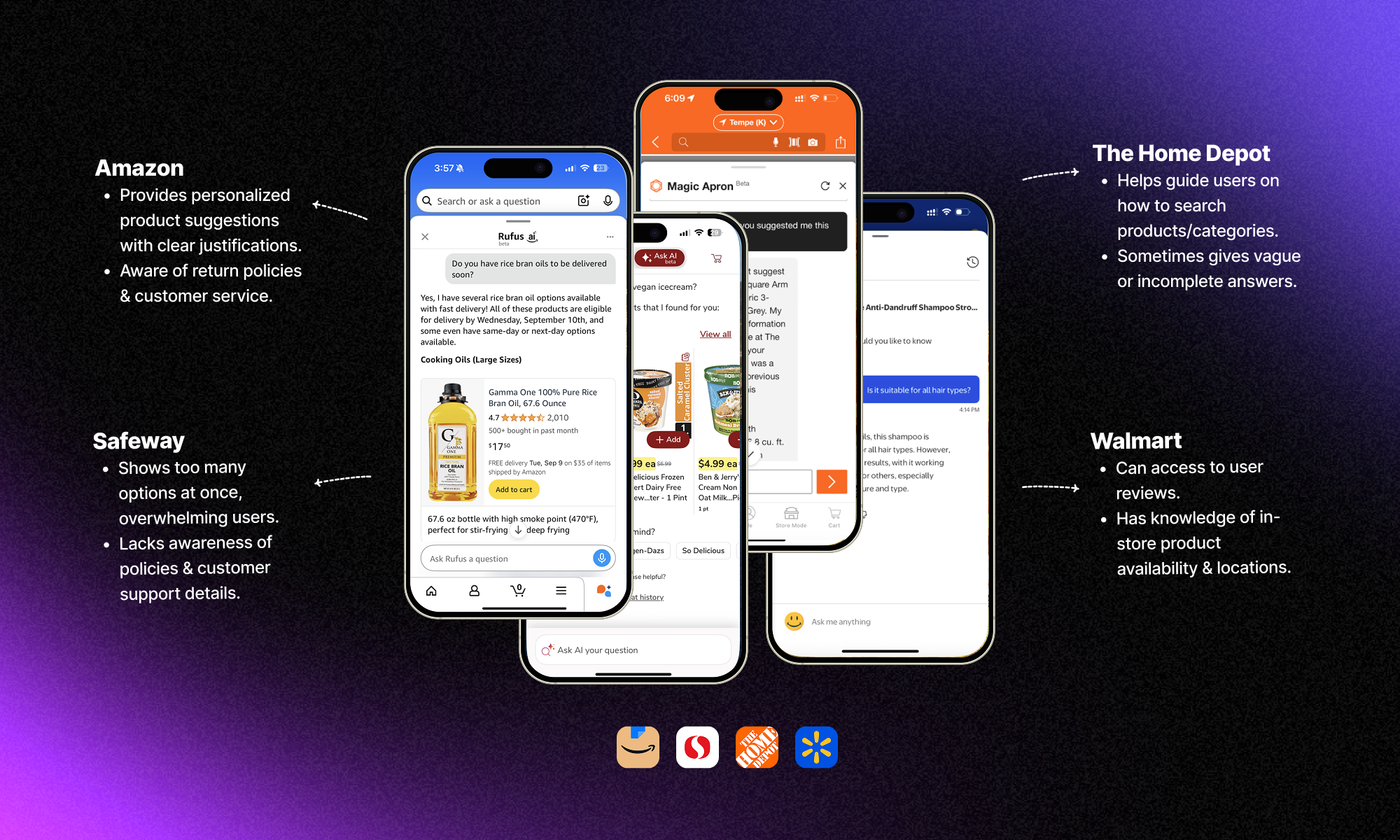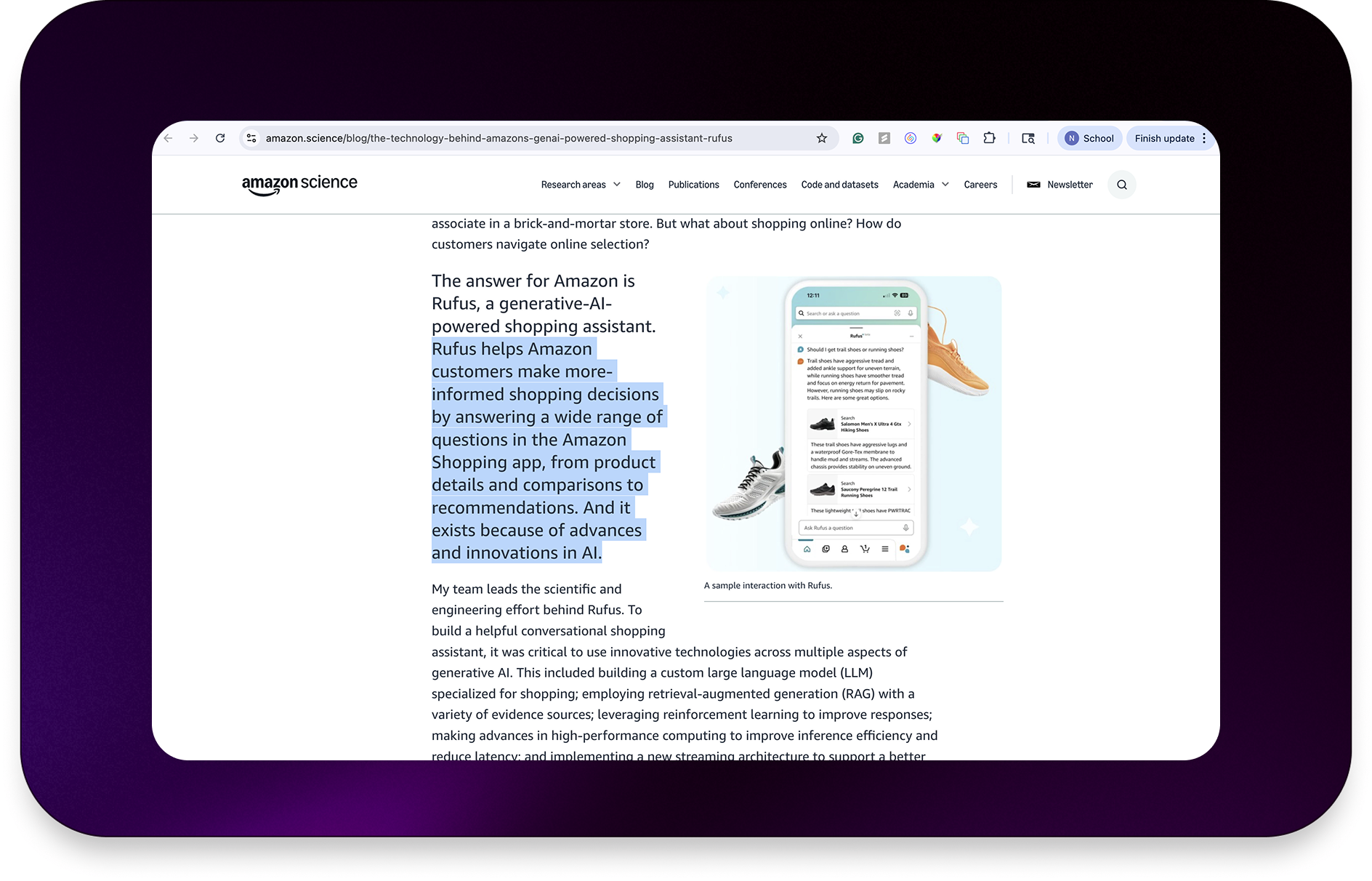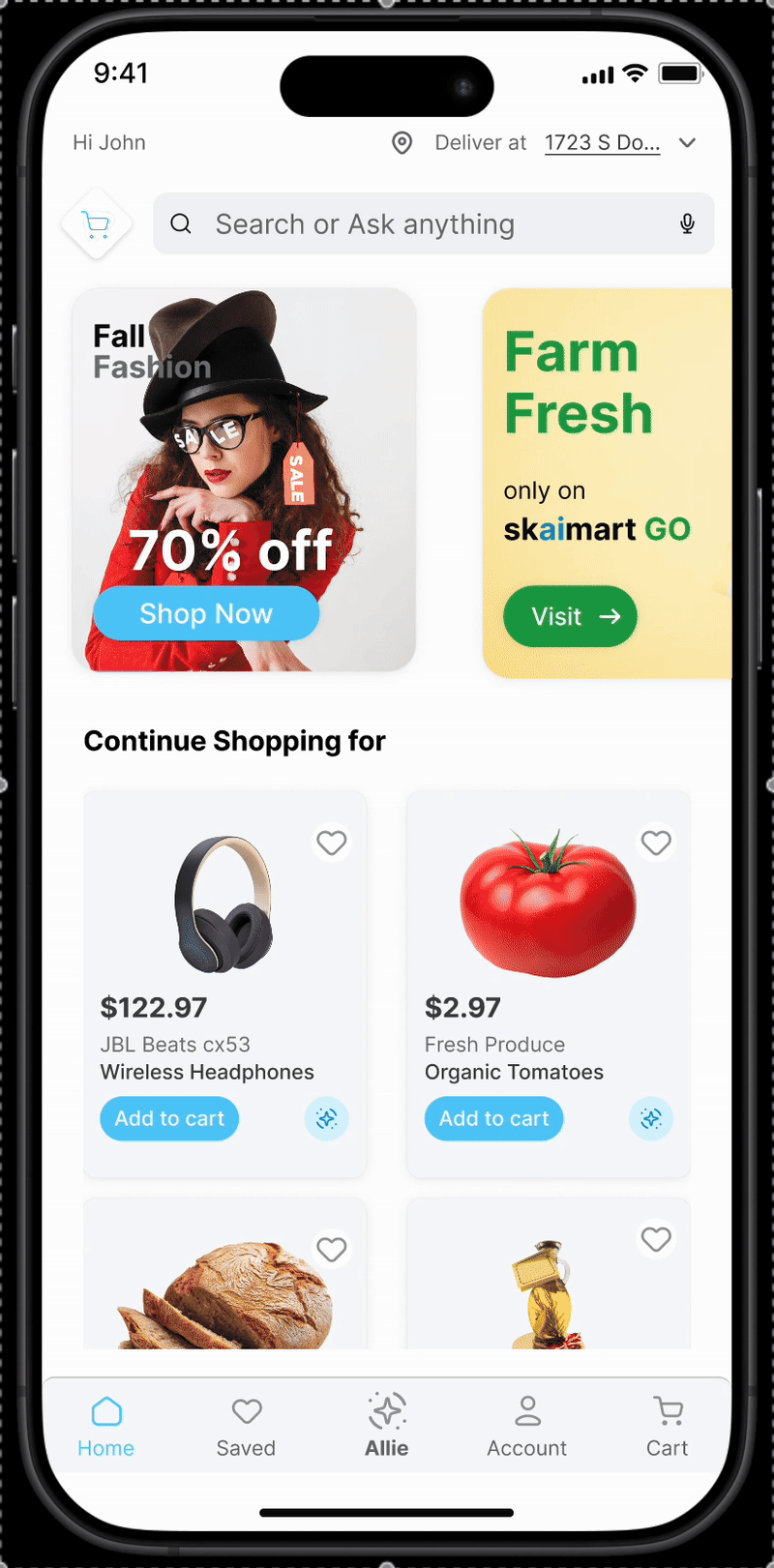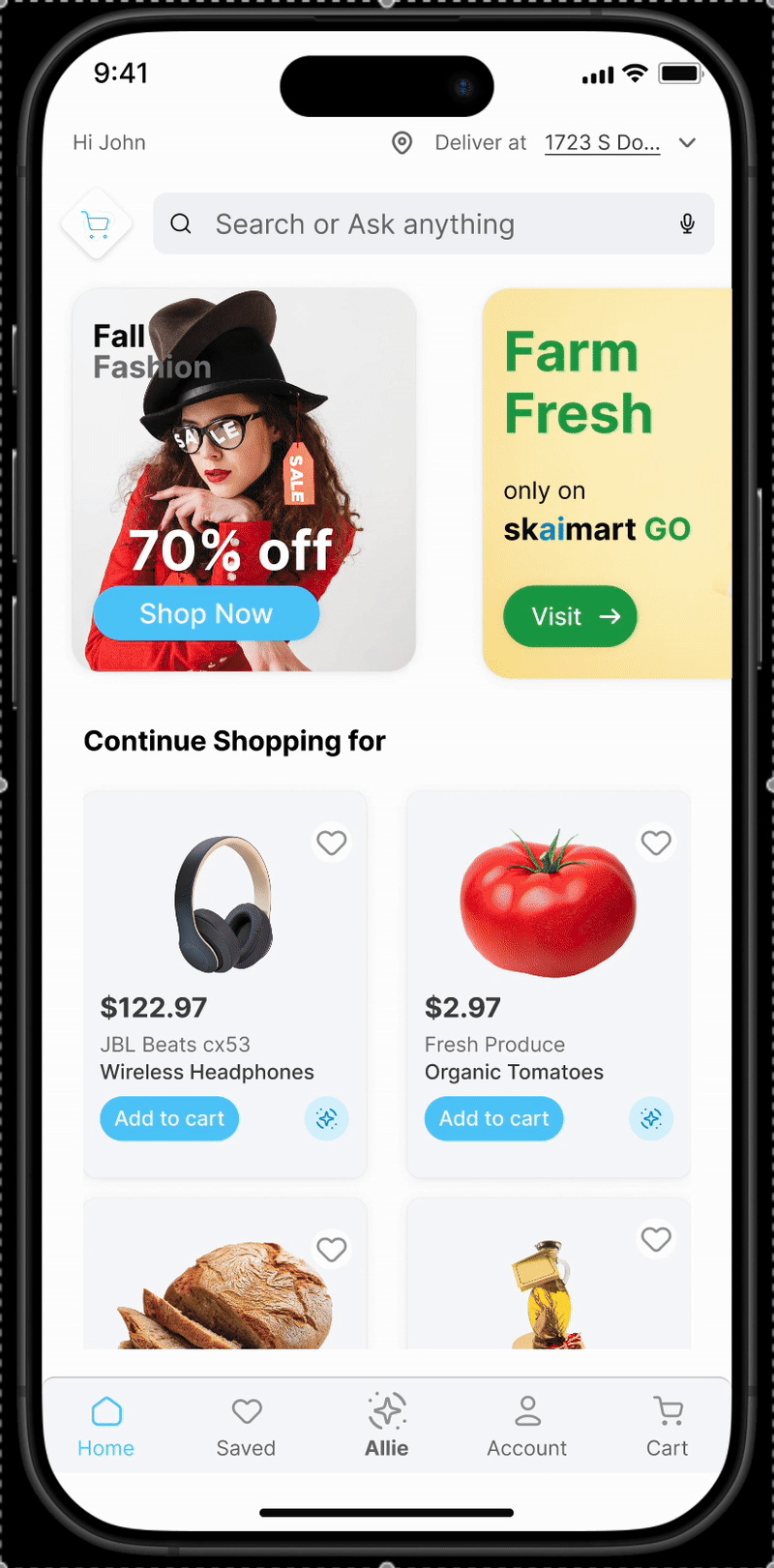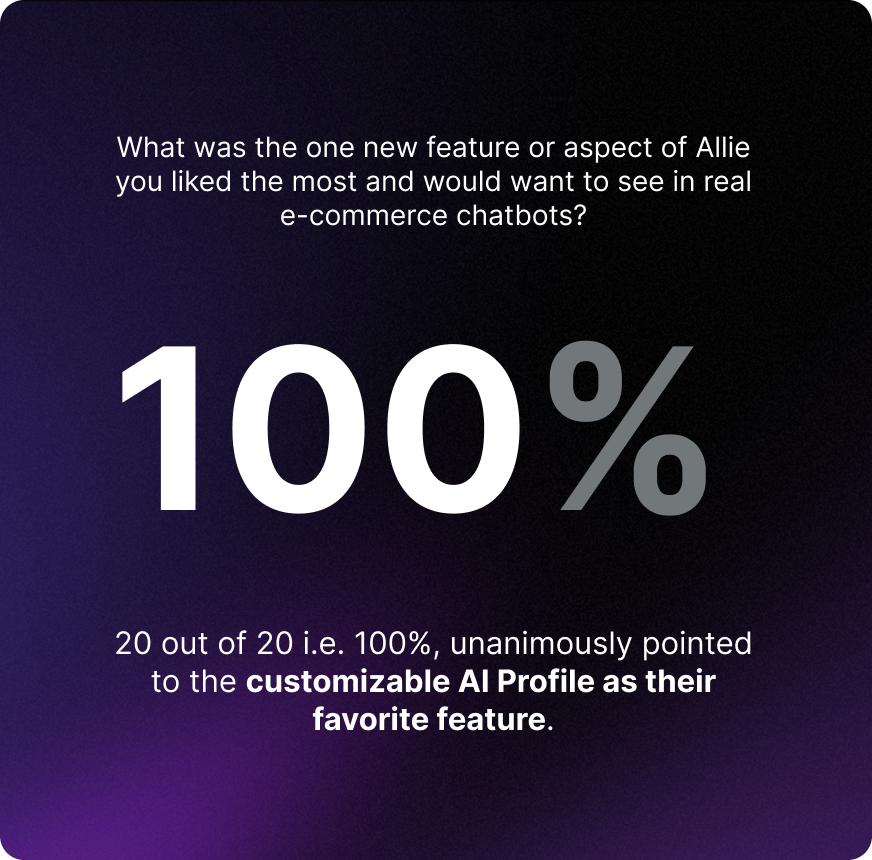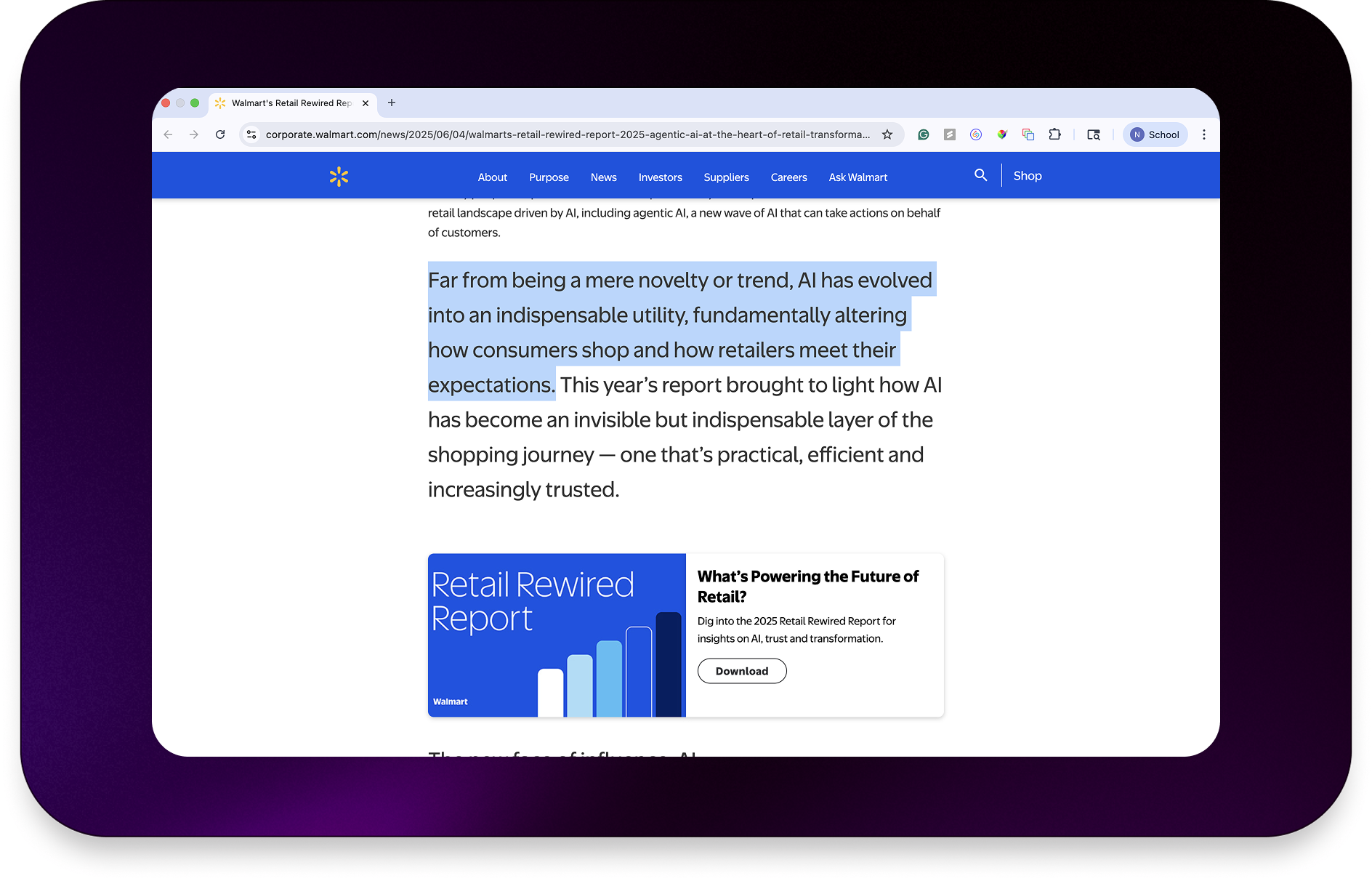Allie from Skaimart
Envisioning the Next Generation of E‑Commerce Chatbots
Role
Lead UX Designer
Duration
Sept 2025
Team
Me (UX Lead), Gaurav Basantani (collaborating UX Designer)
Allie is a next-gen e-commerce assistant that gives shoppers real control through personalized, extensible profiles and enhanced UX for deeper AI integration.
TL;DR
By 2030, AI is projected to handle 80% of all customer interactions. -sellerscommerce.com
E‑commerce is rapidly embracing AI assistants, yet current shopping bots often suffer from poor user experience and limited user control. I led the design of “Allie”, an AI shopping assistant for the fictional Skaimart app, to tackle these gaps.
We introduced
- Customizable AI profile for personalized recommendations.
- Vision to extent this profile to the greater Conversational Commerce ecosystem.
- Enhanced chat interactions (multimodal voice/text, smarter product comparisons, seamless integration)
A/B test against Amazon’s own shopping assistant proved Allie’s impact:
- 18 of 20 of participants preferred Allie’s experience.
- 100% said the new AI Profile was the feature they most wanted in real shopping apps.
Challenge
With retail giants like Amazon, Walmart, and others rolling out AI chatbots in their apps, I set out to investigate how effective and user-friendly these chat experiences really are.
Are these bots truly helpful “virtual shopping assistants,” or just gimmicks?
Do they mimic the feel of an in-store sales associate, or do they frustrate users?
Could it narrow choices or steer shoppers in ways that undermine their control?
Our challenge was clear:
How might we design an e-commerce chatbot that augments the shopping experience without replacing it, providing guidance while preserving the user’s autonomy?
Role
This project was executed under intense constraints. I led the process end-to-end (UX research, interaction design, and testing) with one collaborator supporting the study throughout.
We completed the entire case study in just a week, from research through hi-fi prototype to testing.
A fast-paced sprint that demanded sharp focus on the most impactful problems and solutions.
Inquiry
Evaluating Current Chatbots
We first conducted a structured evaluation of four leading retail apps’ AI chatbots (Amazon’s “Rufus,” Walmart’s “Ask Sparky,” Safeway’s in-app assistant, and Home Depot’s “Magic Apron”).
We devised a sandardized test process with 6 key tasks for each chatbot, emulating common customer queries:
- Search by Asking
- Product Q&A
- Compare Products
- Store Navigation
- Policy/Customer Service
- Recommendations & Justification
And, we uncovered a wide range of maturity from Amazon's highly sophisticated to Safeway's beta model.
Critically, common pain points emerged:
- Limited memory of context
- No way to refine what the bot shows you
- Awkward or verbose answers for comparisons
- Bots appear in only parts of the app rather than throughout the journey
These findings confirmed that today’s chatbots often deliver a fragmented experience: they assist with Q&A, but they don’t truly adapt to user needs or integrate seamlessly with browsing.
Users have to cede control to the bot, rather than collaborating with it.
Research
We went through 30+ published research and articles to understand, validate and better ideate solutions.
Thematic findings
- Adoption is real, not hype: broad rollout + high expectations for personalization.
- Company bet: purpose-built, vertically integrated assistants (Rufus, Magic Apron) to reduce effort and increase confidence.
- Trust grows when the bot feels human-attuned and interactive – not just accurate.
- But autonomy has a ceiling: users still want the wheel; over-automation risks narrowing choices.
Net-net:
Assistants must be helpful and steerable, not black boxes.
Problem statement (refined)
Current e-commerce chatbots need to evolve into truly assistant-like experiences, ones that integrate into the entire shopping journey and offer hyper-personalized help, while empowering the user to steer recommendations and decisions.
What guides Allie
- Visible agency controls – so users can steer the bot mid-conversation.
- Human-attuned interaction: fast, concise answers + follow-ups; multimodal in/out; comparative cards over walls of text.
- Transparency against constraint: explain why each rec fits the current profile and show alternatives.
Ideation and Solution
Building on our directive of hyper-personalization, we extended the idea beyond a single chat into the wider conversational commerce ecosystem. This led us to define the concept of a shareable AI Profile that carries user preferences across sessions, products, and even apps.
The AI Profile
A persistent, customizable profile that users can edit mid-chat and even export in the future to other shopping apps. It gives shoppers direct control over how the assistant behaves:
- Focus: Deals, Fast Delivery, Sustainable, Budget Alternatives, etc. (multi-select)
- Price band: Budget · Value · Neutral · Premium · Luxury
- Quality: Basic ↔ High-End
- Brand familiarity: Explore · Varied · Neutral · Familiar Only
A quick access panel shows current preferences and allows one-off overrides (e.g., “show premium just this once”).
MVP and Enhancements
For our MVP, we prioritized creating an interface that is human-attuned and steerable. The AI Profile anchors the experience, while design enhancements focus on:
- Fast, concise answers and natural multimodal input (text/voice)
- Clear follow-ups instead of walls of text
- Comparative cards over narrative blocks
Future enhancements explore a portable profile, allowing shoppers to carry preferences across multiple shopping platforms.
Additional Features
- Better comparisons: Side-by-side product cards inside chat with specs, pros/cons, price, and ratings. Scroll to scan; tap to dive deeper.
- “Ask Allie” everywhere: An icon on listings and product pages opens a context-aware chat that already knows the item you’re viewing.
In short: from a directive of hyper-personalization, we shaped Allie into an assistant that is integrated, steerable, and scalable across the shopping journey.
Prototype #1
Imagine a storefront assistant that chats about products from where you see the product, compares options elegantly, remembers your preferences, and adapts instantly to spur-of-the-moment choices, all with in-chat editable profiles
Prototype #2
Now picture taking that assistant where you go. Set your AI profile once and share it across apps, a digital companion that knows your tastes yet flexes to new contexts.
A/B Testing
To validate our design, we conducted informal A/B user testing against the gold standard, Amazon’s AI assistant.
We recruited 20 e-commerce app users (mix of colleagues and friends who shop online frequently, ages 20–40, 7 female/13 male).
Each participant was asked to perform a realistic task:
Find a pair of wireless headphones and use the AI assistant to get recommendations and compare options.
First, they did this using Amazon’s live app and Rufus assistant; then they repeated a similar task using our Skaimart + Allie prototype.
Post-test follow-up questions and results (in adjecent/below graphics) were truely astonishing.
Impact
The success of Allie’s concept in user testing suggests a promising path forward for AI in e-commerce. By allowing users to steer the AI (rather than the other way around), we saw engagement and enthusiasm that comparative chatbots rarely achieve.
A more formal study could measure improvements in objective metrics like conversion or retention, but our qualitative results already hint at a boost in user trust and perceived relevance of recommendations.
In an era where 24/7 AI assistants are becoming the norm, designing them to be transparent, user-tunable, and seamlessly integrated could dramatically improve the online shopping experience for both customers and businesses.
Reflection and Growth
On a personal note, this project was an intensive learning experience. Leading a rapid one-week case study taught me how to quickly synthesize research into actionable design decisions and confirm those decisions with just-enough user feedback. I also deepened my understanding of the balance between AI automation and human-centered design, and concepts like maintaining user agency, building trust through transparency, and the ethics of personalization were not just theoretical, but things I had to address in the design.
Finally, this project was a breakthrough for me in mobile UX and emerging tech: it pushed me to design beyond web interfaces, adapt to mobile constraints (like small screen comparisons), and explore the cutting edge of AI-driven UX. I’m excited to carry these lessons forward as AI becomes an ever bigger part of product design.
